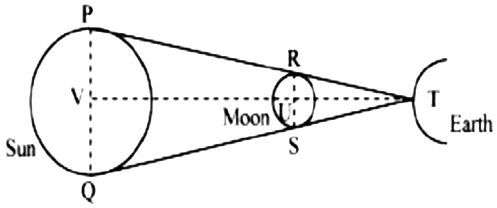The position of the Sun, Moon, and Earth during a lunar eclipse is shown in the given figure.

Distance of the Moon from the Earth = 3.84 × m
Distance of the Sun from the Earth = 1.496 × m
Diameter of the Sun = 1.39 × m
It can be observed that ΔTRS and ΔTPQ are similar. Hence, it can be written as:
Hence, the diameter of the Moon is 3.57× m.

© 2026 GoodEd Technologies Pvt. Ltd.